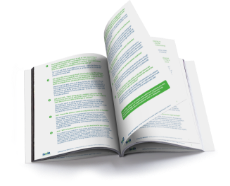Advice for business sellers during the UK cost of living crisis
The UK cost of living crisis is the latest thorn in the path of business owners as they face higher energy bills, supply chain delays, and record high inflation, exacerbated by the Ukraine War. The lasting effects of the coronavirus (Covid-19) pandemic on businesses are visible as they cope with a high debt-to-income ratio after taking out additional loans during the pandemic.
As the cost of running a business slowly increases, businesses must restructure their finances and review existing outgoings to combat current economic hurdles. If finding a new buyer is on the cards for business owners, how should they approach selling a business during the cost of living crisis?
What is the UK cost of living crisis?
The UK cost of living crisis shapes the future of both young and experienced businesses, pushing them to streamline expenditure and maximise profitability to survive the current trading climate.
The key factors contributing to the current cost of living crisis include:
Wholesale energy prices - Wholesale electricity and gas prices have increased 250%, intensifying the financial burden on businesses. As there is no energy price cap for businesses, energy suppliers are free to determine the maximum they can charge per unit of energy. There are temporary protections in place for businesses against rising energy bills throughout Winter 2022 through the Energy Bill Relief Scheme.
Covid-19 and Ukraine war - Supply chain problems triggered by Covid-19 and heightened by the Ukraine War are contributing to the scarcity of materials, such as oil, gas, chips and wheat, subsequently pushing up prices.
Inflation and interest rates – As inflation reaches a 40-year record-high and interest rates push to the highest level since 2008, this detrimentally affects the spending appetite of consumers and the rate at which businesses can borrow money.
The cost of living crisis may determine a business owners’ decision to sell a business and the timescale in which to pursue this. The scale of the challenge also varies according to the sector, as while fish and chip shops or restaurants in the food industry see an increase in property overheads, farming and agricultural businesses are at the bitter end of labour shortages which creates a domino effect – rotting harvests, reduced output and empty supermarket shelves.
- Previous sales and acquisitions experience
- Sector specialisms and average success rate
- Sales value expectations and growth potential

Preparing to sell a business during the cost of living crisis
The business sale process includes preparing a business for sale, valuing a business to calculate how much it’s worth, advertising/marketing the business and negotiating with buyers to complete the deal.
Selling a business during the cost of living crisis may lead to questions from buyers in relation to the stability of your supply chain, energy consumption, and liabilities. While the effects of the cost of living crisis have been far reaching, it has also upped business resilience, advantageously positioning many to attract the right buyers during the current climate.
For more information on selling a business, contact a member of the Selling My Business team of experienced business brokers and valuers.

